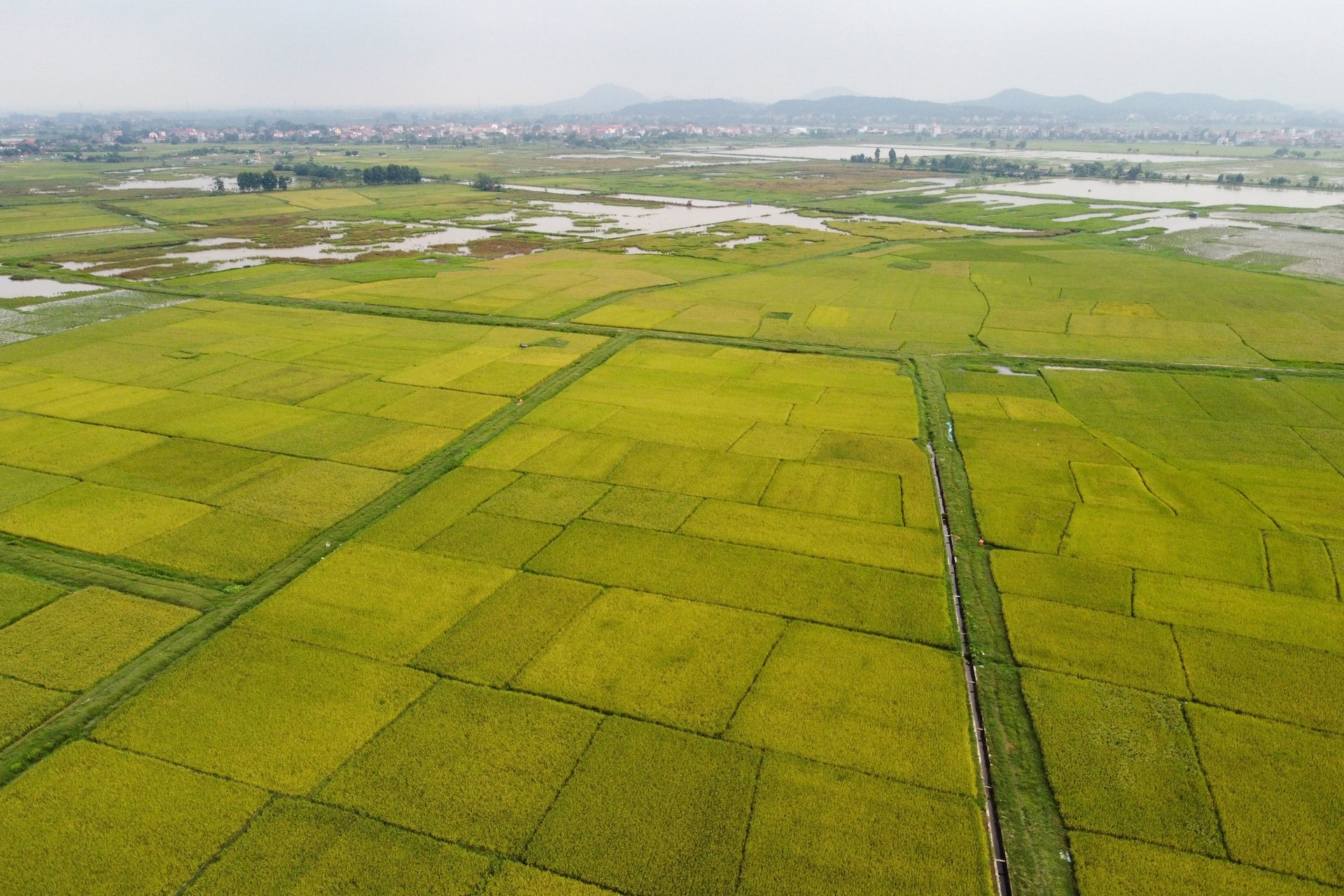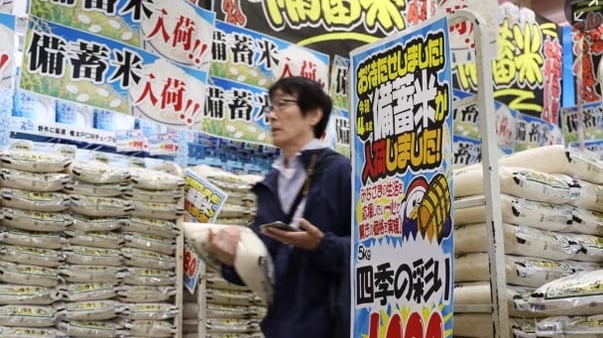June 20, 2025 | 22:17 GMT +7
June 20, 2025 | 22:17 GMT +7
Hotline: 0913.378.918
June 20, 2025 | 22:17 GMT +7
Hotline: 0913.378.918

Rice export prices this year increased more than the average of years.
According to rice trading businesses, rice export prices have increased recently, but buying rice is challenging. The reason is that most of the rice has been purchased by traders from the beginning of the crop, while businesses have to collect goods to pay the signed orders at low prices before.
Phan Van Co, Marketing Director of Vrice Co., Ltd., predicts that the increase in rice prices will probably last until the end of August 2023 due to unstable market sentiment. When the market sentiment stabilizes, the market can trade normally again.
Do Ha Nam, Chairman of the Board of Directors of Intimex Import-Export Joint Stock Company, said that the traditional markets of our country, such as the Philippines, Indonesia, and China... all have a great demand for importing Vietnamese rice with a large volume of orders from 500,000 to 1.5 million tons. Some markets in Europe and Africa are also actively looking for rice imports from Vietnam.
According to the Vietnam Food Association, from the beginning of 2023, rice export output reached nearly 3 million tons, an increase of more than 40%; rice export price reached US$ 534/ton, an increase of more than 9% compared to 2022.
To avoid losing control of rice prices, the Ministry of Industry and Trade is committed to closely monitoring the market situation to support businesses and balance supply and demand promptly. The ministry also suggested that rice exporters regularly maintain a circulation reserve of at least 5% of the rice they have exported in the previous 6 months.
In case there is sufficient supply and good conditions for rice export, the Ministry of Industry and Trade will coordinate with the Ministry of Agriculture and Rural Development to strictly control the quality of exported rice, to avoid the situation because of the opportunity to increase prices, the conditions of importing countries are loosened that businesses neglect to control food safety. On the contrary, the Ministry of Industry and Trade will propose measures to control rice exports if there is a shortage.
In the context that many countries have stopped exporting rice, experts say this is a good opportunity for Vietnam to export this product.
After India, the UAE has also announced to stop exporting rice. Russia also officially withdrew from the agreement to export grain through the Black Sea. Climate change causes a decrease in global rice production, so the rice market is constantly growing. Many comments said that this is an opportunity for Vietnam's rice export.
On July 20, India began implementing a ban on rice exports. According to Bloomberg, many people lined up outside grocery stores to buy rice to stock up. Some stores have limited purchases, but many use temporary food shortages to raise prices.

The autumn-winter crop in the Mekong Delta will be increased by 50,000 hectares. Photo: Tung Dinh.
Since then, everyday Vietnamese and Thai rice has increased by one price. On July 20, the price of 5% broken rice for export to Vietnam was US$ 533/ton; 25% broken rice was US$ 513/ton.
Twelve days later, on August 1, the price of 5% broken rice for export to Vietnam jumped to US$ 588/ton, and 25% broken rice also increased to US$ 568/ton. Along with Vietnam, the price of Thai 5% broken rice has risen by more than US$ 620/ton.
Nguyen Nhu Cuong, Director of the Department of Crop Production (Ministry of Agriculture and Rural Development), said that according to the rice production plan in 2023, the whole country planted 7.1 million hectares with an output of 43 million tons of rice.
According to the Department of Crop Production, balancing rice consumption for the domestic market will push the export volume to 7.5-8 million tons.
Currently, the primary competitor in Vietnam's rice exports is Thailand. They have about 4-5 million tons of rice left, while Vietnam has about 2-2.5 million tons. Therefore, Vietnamese enterprises must determine the most appropriate time to export rice. This issue requires market forecasting to be carefully calculated.
There are lessons from previous years when businesses signed a contract bet could not buy rice. Or companies see a new contract with a higher price of rice and break the contract and betray the trust. Exporting rice is a long-distance story; reputation needs to be maintained, especially in large traditional markets such as China, the Philippines, Indonesia, and Malaysia.
Previously, the Ministry of Agriculture and Rural Development decided to increase the area of the autumn-winter crop in the Mekong Delta by 50,000 hectares to 700,000 hectares. At the end of the year, the Lunar New Year, Vietnam still has an additional 1.2 million tons of rice for the winter-spring crop 2024. Therefore, Vietnam is wholly assured of food security to seize the best opportunity for export.
Translated by Ha Phuc

(VAN) Last week, the U.S. Department of Agriculture (USDA) released its June World Agricultural Supply and Demand Estimates (WASDE), raising projections for both Indian rice production and U.S. rice imports for the 2025/2026 marketing year.
/2025/06/17/2344-1-131758_261.jpg)
(VAN) Amid tariff risks and growing trade barriers in the U.S. market, Australia is emerging as a promising destination to sustain the growth momentum of Vietnam's shrimp exports.
/2025/06/17/2013-1-nongnghiep-112009.jpg)
(VAN) This notable growth trend reflects the global taste for fresh, nutritious fruits and the expanding use of lychees across various sectors.

(VAN) The political and cultural insulation of Japan’s beloved grain is falling apart, and experts warn the country’s relationship with the staple will have to adapt.

(VAN) Noting risks, report examines impacts of avian influenza, changing trade patterns since 2022, fish fraud, and shipping industry’s net-zero goals.

(VAN) Mr. Tran Quang Bao, General Director of the Forestry and Forest Protection Department, met and worked with the International Wood Products Association to promote cooperation in the field of timber trade.

(VAN) China's outbound shipments of rare earths in May jumped 23% on the month to their highest in a year, though Beijing's export curbs on some of the critical minerals halted some overseas sales.